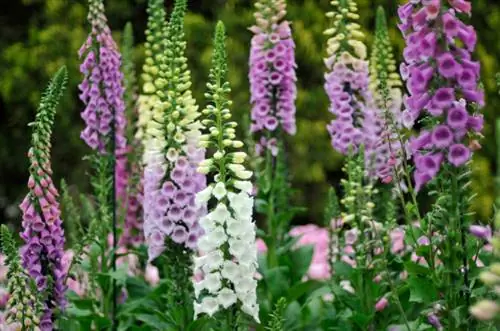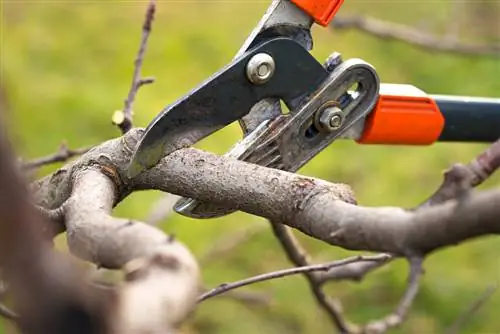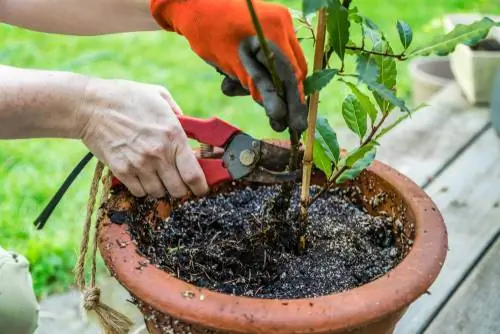- Author admin [email protected].
- Public 2023-12-16 16:46.
- Last modified 2025-01-23 11:20.
It is known for its toxicity, its rich flowers and its candle-like growth. But how does the foxglove behave in relation to an important part of care for other plants, cutting?

Why and when should you cut the foxglove?
The foxglove is cut to use it as a cut flower, to remove infected parts, to promote a second flowering, to prevent self-seeding or to make poultices for wounds. Cut the spent flower heads before seeds emerge to achieve perennial flowering.
Five good reasons to cut your foxglove
The foxglove is a short-lived plant that is usually biennial and rarely perennial. However, there are various reasons why it should be cut every now and then.
This primarily includes these five aspects:
- use as a cut flower for the vase
- to remove parts affected by diseases
- for a double bloom
- to prevent self-seeding
- for making poultices for external wounds
Cut the foxglove for a second flower pile
The foxglove blooms between June and August. As soon as its flowers have withered (before the seeds have had a chance to develop), the flower stems should be cut off. Then next year another flowering can be expected and the foxglove is perennial. However, the second flower is smaller because the foxglove lacks strength.
The flower stems can be cut off before they wither. Then at least 2/3 of the flower buds should be open. The flower stems can be placed in a vase. To ensure they last a long time, the water should be changed every 2 days. It is also advisable to shorten the stems regularly.
Cut foxglove to prevent self-seeding
Foxglove happily spreads itself via its seeds. If you want to prevent this, you should cut back the seed stalks before the capsules open and the seeds are scattered. If you want to collect and store the seeds, you should cut off the stems shortly before the seeds ripen.
Tips & Tricks
Attention: Always wear gloves when handling or cutting thimbles. Even if you don't consume it, its toxic active ingredient can reach the skin and cause redness and allergic rashes. Alternatively, you should wash your hands after touching the cloth.






